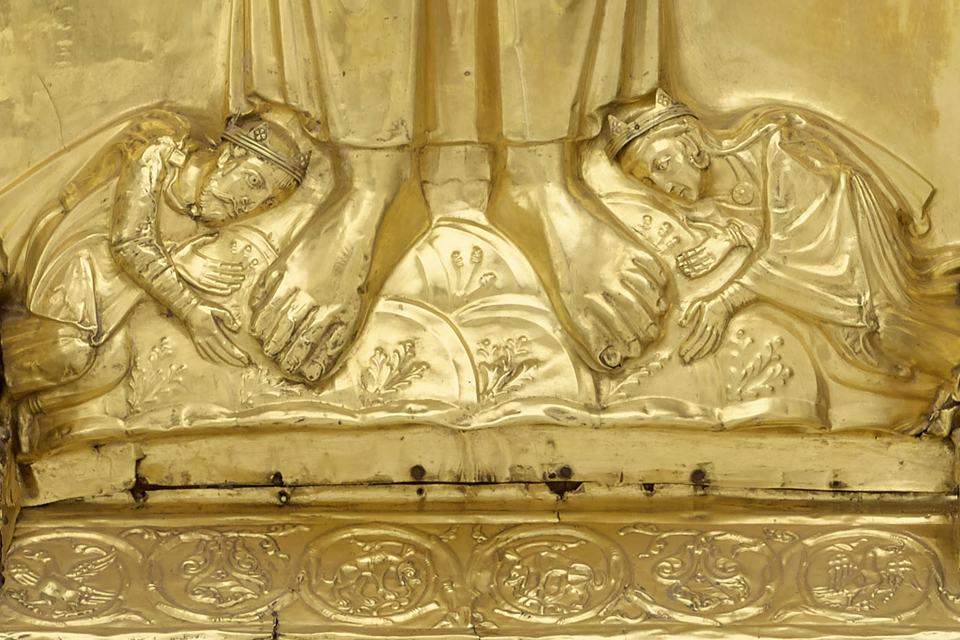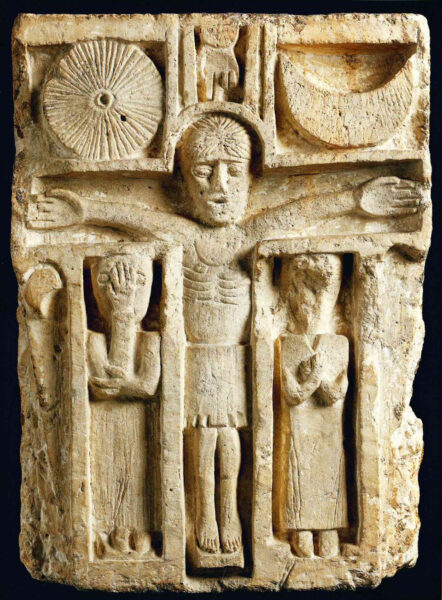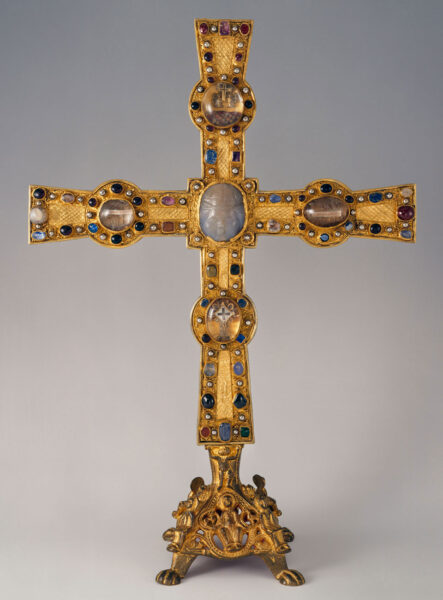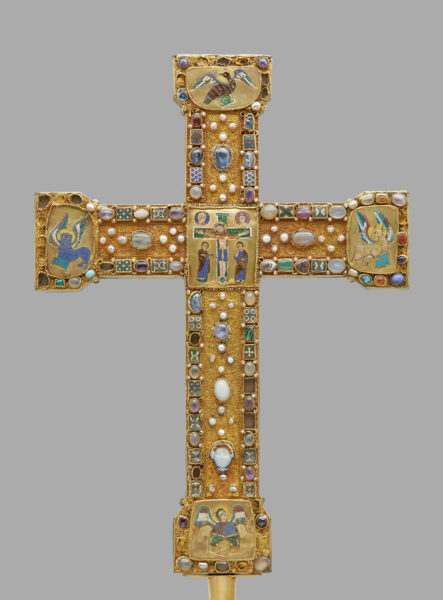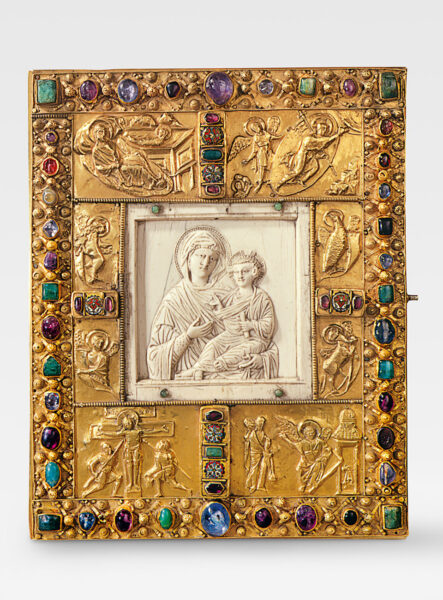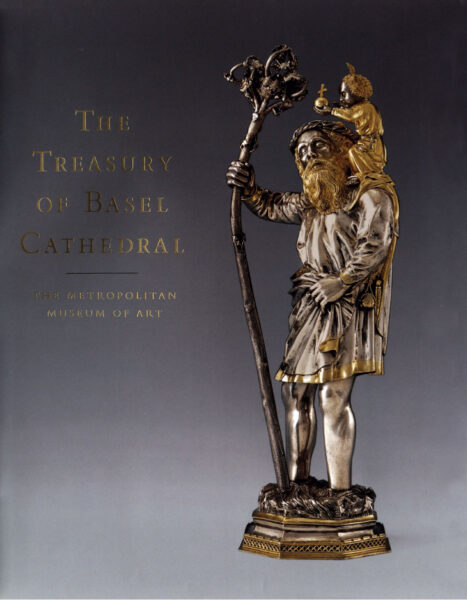In 1019 the Holy Roman Emperor, Henry II, took part in the consecration of the Minster in Basel. A major exhibition marks the anniversary
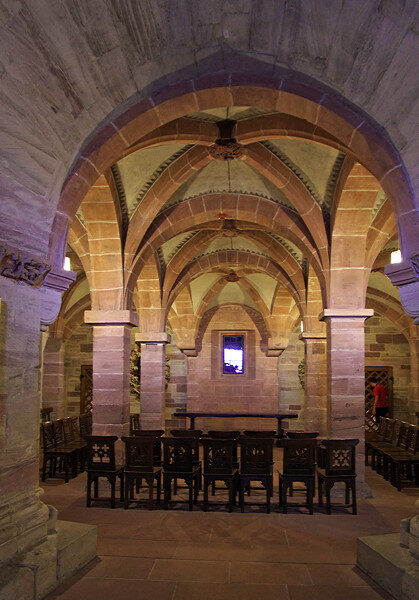
Archaeological excavations have shown that Basel was inhabited as early as the 5th century BC. In the first century BC, the settlement relocated to the hill of the present cathedral, probably as a reaction to Caesar’s Gallic Wars. After the invasion of the Alemanni in AD 406, the town turned into an insignificant Alemannic settlement. Probably in the 7th century, the bishopric was moved from the nearby Roman Fort at Augusta Raurica. However, it is not until the 9th century a cathedral is mentioned at Basel. The Carolingian bishop Haito, who belonged to the inner circle of Charlemagne, and whose testament Haitho witnessed in AD 811 was responsible for the building. This Carolingian church was a long, single-hall structure with an apse and two flanking towers in the west. Likely the church looked like the church at Corvey built at the same time. Unfortunately, this early church was destroyed in 917 by the Hungarians, who also killed the bishop.
In 1006, Henry II acquired the city of Basel from his uncle, the king of Burgundy. Located at at the last navigable part of the River Rhine and intersected by the roads between Italy, Burgundy and France, Henry must have recognised the unique position of Basel. Soon after, the future emperor initiated the speedy reconstruction of the church, thus paving the way for the privileged position of Basel in the later Middle Ages. Politically, the events of 1019 paved the way for the rule of the bishops and the consolidation of their power base on the Upper Rhine and in the Jura, from which the city itself also profited. Hitherto Basel had been a sleepy rural town on the River Rhine. Now, the town turned into a proper city complete with a wall built in the second half of the 11th century. In the next 250 years, the population grew from 2000 to 8000, turning the small rural town into a magnificent city.
The Minster as it stands today was built between AD 999-1025 on the foundations of Haitho’s earlier church, but restored in the late 12th century. The man in charge was Bishop Adalberto and the church was first known as Aalberto’s. Soon, though, the cathedral came to be named after its patron and benefactor, the Holy Roman Emperor, Henry II, the last of the Ottonians. He was present together with his wife, Kunigunde, at the re-consecration in 1019. Since then, the Minster has been known as the ‘Heinrich Münster’. As it stands today, its main fabric the late 12th century with later additions. Nevertheless, the crypt offers a window into the very early church of Haitho, while the arcades separating the nave from the aisles partly belong to Adalbert’s building.
The Exhibition
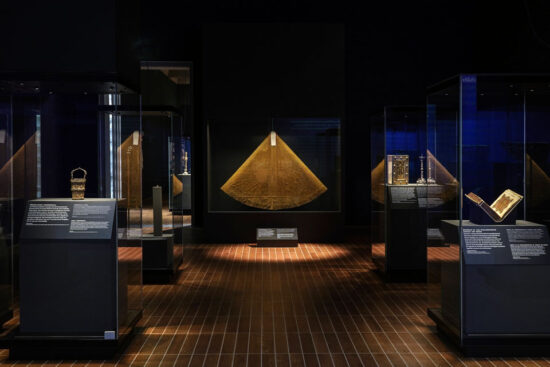
This year, the Basel Minster marks its 1000th anniversary with a major exhibition showcasing the cultural history of the reign of Henry II, the last Ottonian emperor
The exhibition also sheds light on how people lived a thousand years ago, Basel’s relations with the Kingdom of Burgundy, the interaction of secular rulers and the church and the cult of Emperor Henry and Empress Kunigunde. Both were canonised in the 12th century. Following their canonisation, Henry II and his wife Kunigunde came to be enshrined in Basel’s collective memory.
Exquisite works on loan from private and public collections in both Europe and the United States provide vivid proof of how important Emperor Henry II and his “golden gifts” were – for both the City of Basel and the entire region.
A magnificent array of medieval gold-smithing, bronzes and textiles along with some outstanding examples of book illumination and ivory carvings supply the larger context for the consecration of Basel Cathedral as a highpoint in Basel’s history.
Golden Gifts
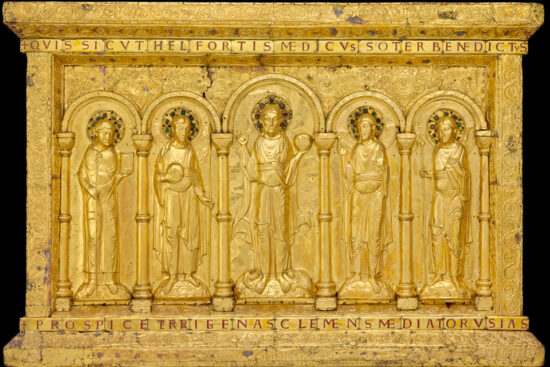
At the consecration of the new church, the imperial couple endowed the bishop and the new church with church land, privileges, as well as numerous golden gifts. This imperial donation consisted of relics, the ‘Heinrichskreuz’, a pallium, a golden censer, a candlestick, a golden book cover, a folding throne, and banners. Probably, the famous Golden Altar (frontal) was part of this donation. When Henry and his empress were canonised in 1146, these gifts were elevated to the status of relics. Unfortunately, only the Cross and the Golden Altar have been preserved. Today, neither of them belongs to the cathedral nor the museum in the city of Basel. The cross and the frontal were sold off in the mid 19th century.
The highlight of the show is the Basel Antependium, which for the first time in decades left Paris to be temporarily returned to its first home. The Basel frontal, which now belongs to the Musée de Moyen Age, is believed to have been gifted by Henry II at the occasion of the consecration. The temporary return of the Golden Altar Frontal to Basel affords us a unique opportunity to view this masterpiece together with the other treasures in the exhibition. Together, they constitute a complex art historical ensemble.
Intricately bound up with the history of the city, the frontal measures 1.20 x 1.77 m. Made of raised gold on a wax-resin compound and with a wooden core, enamel, glass, pearls, bloodstone, carnelian, and other gemstones embellish the frontal. The centre is decorated with Christ flanked by three arch-angels and St. Benedict. At his feet kneel the two donors, Henry II and Kunigunde. The frontal is believed by some to have originated in either Bamberg or Fulda.
Another unique piece of art is the so-called ‘Heinrichskreuz’. With arms of equal length extending from a central square, an antique cameo representing a male head encircled with an ivy wreath constitutes the centre-piece. Fragments of the true cross are visible through crystals above and below, while relics of Henry II can be seen through the stones to the right and left.
Basel Cathedral Treasury online
Collaborating closely with Basel Historical Museum, researchers at the University of Basel have worked to make the Basel Cathedral Treasury digitally accessible. The results of their work serve as the basis for interdisciplinary projects aimed at probing the opportunities and possibilities opened up by computer-assisted methods in the humanities. Objects that for a thousand years have been part of Basel’s history can thus be experienced in a completely new way.
FEATURED PHOTO:
Detail from the Golden Antepedium from Basel © Historisches Museum Basel, Philipp Emmel.
VISIT:
Gold & Ruhm – Geschenke für die Ewigkeit
Historischen Museums Basel
11.10.2019 – 10.01.2020
CATALOGUE:
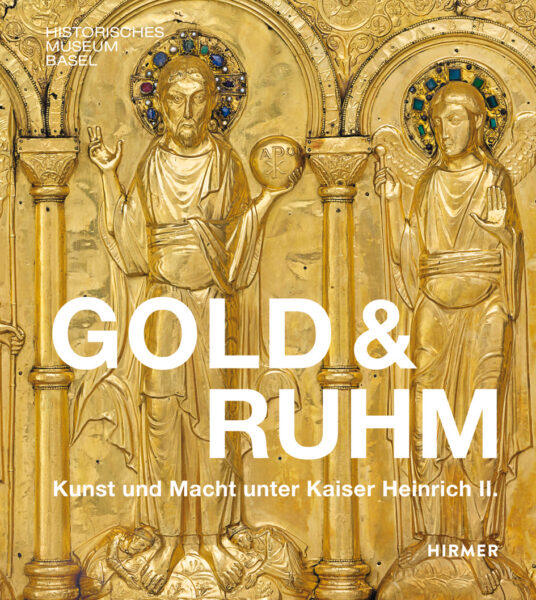 Gold & Ruhm. Kunst und Macht under Kaiser Heinrich II
Gold & Ruhm. Kunst und Macht under Kaiser Heinrich II
Ed. by Marc Fehlmann, Michael Matzke and Sabine Söll-Tauchert
Hirmer Verlag 2019
READ MORE:
The Treasury of the Basel Cathedral
By Timothy Husband and Julian Chapuis
The metropolitan Museum of Art 2001
READ ALSO:
